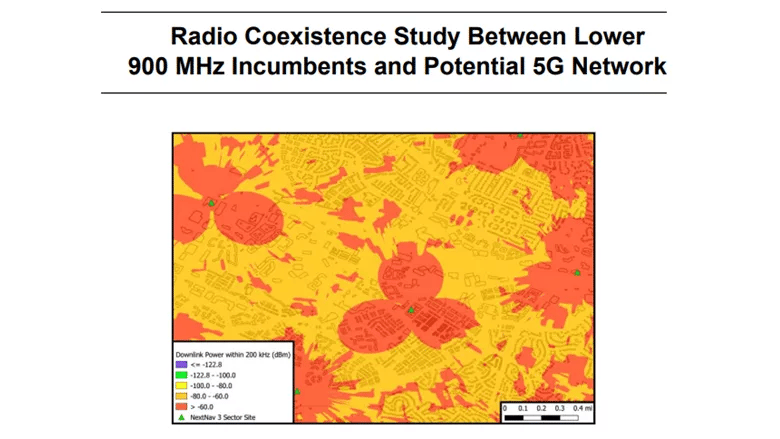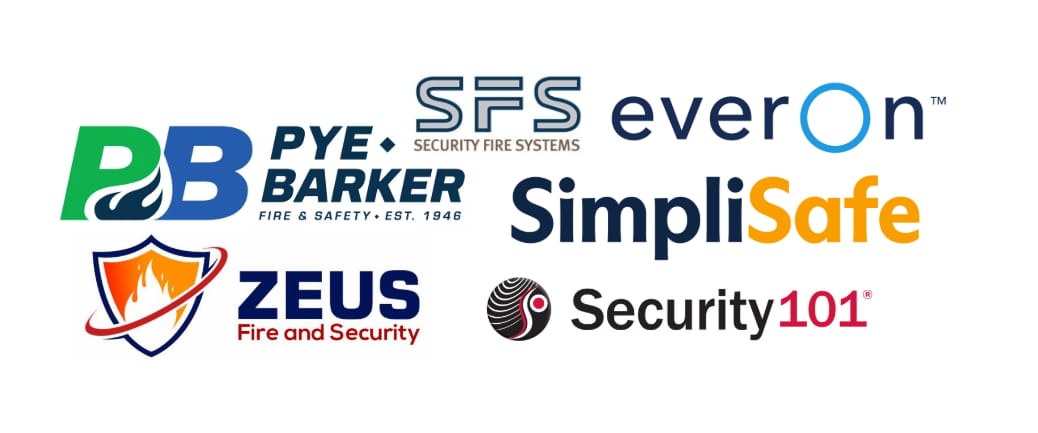november 2025
INSIDER News & Business
//
SHARE
Security Trade Shows
New Tech, Client Feedback & Real-Time Crime Centers: 3 Takeaways From GSX 2025
GSX featured multiple companies breaking new ground in different markets. The conference was also home to recurring technological themes, special on- and off-site events, and countless leaders sharing their thoughts on the future of security. Ahead are three key takeaways from the conference and surrounding security events.

Image courtesy of SDM Staff
The Buzzwords: AI, Cloud, & Open Platforms
As is the case across many business sectors and even end users, buzzwords like “AI” and “the cloud” were running rampant through the GSX show floor.
On the AI front, generative AI (GenAI) is the “low-hanging fruit” because it can serve as a simple, time-saving solution for companies that are just starting out — i.e., by recording and summarizing phone calls to help salespeople be more efficient and provide better customer service.
AI capabilities are already a reality for many companies across the security ecosystem, and the cloud is just as prominent. Additionally, it was rare to run into a company that didn’t emphasize open platforms. Many companies are committed to moving away from siloed pieces of technology. The goal of this shift is for these technologies to come together and for data streams to flow seamlessly, given the rapid advancement of technology and the new platforms becoming available every single day.
But “AI” and “the cloud” aren’t just buzzwords. Multiple companies are focused on and committed to making these technological advancements easier for clients to understand, safer to use, and poised to solve real problems to enhance ROI.
The Integrator Perspective: Clients Are Confused
The “thematic noise” running through GSX was tech, tech, and more tech. Though these technologies are ultimately beneficial, and the likelihood of getting left behind if not focused on these advancements is extremely high, they’re creating confusion and complexity for customers. Convergint and Genetec’s joint press conference during GSX addressed this issue head-on.
Alain Bissada, area vice president of sales, North America, Genetec, and Eric Yunag, executive vice president of products and services, Convergint, came together to discuss how the “buzzword” technologies need to be leveraged correctly, put in the right context, and solve actual problems that clients are having.
Bissada and Yunag urged organizations to stop simply responding to budget pressures and threats. Don’t pursue advancements when it’s convenient, or when it’s suddenly a necessity. Instead, take a step back and think about where you want to go with technology. Rather than grabbing onto the technological capabilities and forcing them into existing systems, evaluate the existing systems first, research the capabilities out there, and find ways to implement these new solutions from there.
The Impacts & Innovations of the City’s Real-Time Crime Center
On the second day of the show, Axis Communications hosted a behind-the-scenes tour of the New Orleans Real-Time Crime Center (RTCC), offering a glimpse into one of the city’s most critical public safety operations.
Operating as a public safety tool, the RTCC is designed to be both powerful and secure, and is built for resilience and adaptability. It aims to be more than a crime prevention center, as it also assists with large-scale events, sometimes deploying additional personnel or mobile workstations. Its tech backbone includes Axis-manufactured cameras, Genetec’s video management systems, and integration through Motorola Solutions’ CommandCentral Aware platform.
The center falls directly in line with the GSX theme of using AI strategically. RTCC is cautious about adopting AI due to its unwavering commitment to taking proper safety and privacy measures, though the center is exploring future applications like water rise detection.
The Path Ahead
GSX was a crash course in where the industry is now, and where it’s headed. The conference underscored the future of security: integration, innovation, and intentionality. Amid the tech buzz, it was clear that real transformation only happens when these tools are used thoughtfully to solve real-world problems. For security professionals, integrators, and vendors alike, the path forward isn’t just about embracing new technologies; it’s about doing so with clarity, purpose, and a deep understanding of what customers truly need. — By Brianna Wilson, SDM Managing Editor
This wrap-up was condensed. Read the full story on the SDM website.
New Research Shows Flawed Spectrum Proposal Would Cause Public Safety Risks, Communications Disruption
A new research report, filed by the Security Industry Association (SIA) with the Federal Communications Commission (FCC), details the risks of a proposal under consideration by the FCC that would restructure portions of the Lower 900 MHz band, which is used by billions of unlicensed, low-power devices.

Image courtesy of SIA
NextNav has petitioned the FCC to reconfigure the frequencies between 902-928 MHz (the Lower 900 MHz Band) and grant the company a nationwide license for 15 megahertz of spectrum so it can establish a 5G terrestrial-based position, navigation, and timing network — radically altering the spectrum. The Lower 900 MHz band is heavily used by “Part 15” security and life safety systems, smart home technology, consumer, and business electronics and more devices that would face harmful interference from NextNav’s high-power usage in the band.
New research conducted by engineering consulting firm Pericle Communications Company, commissioned by SIA and with additional support from the Alarm Industry Communications Committee, the Electronic Security Association and The Monitoring Association, shows that the proposal would severely limit the range and compromise the effectiveness of devices operating in this spectrum, including panic buttons, motion sensors, carbon monoxide detectors, and smoke alarms; personal medical alert devices and emergency call buttons; wireless microphones, headsets, and license-free two-way radios; wireless security cameras and doorbell cameras; and outdoor public safety and security devices, including traffic control and tolling devices, vehicle status and alerting devices, and gunshot detection devices.
In addition to these public safety and security uses, other critical systems that could be disrupted include equipment that first responders use during emergencies, municipal infrastructure, railroad operations and safety, highway infrastructure, retail and supply chain operations, and agriculture solutions.
As other concerned parties have noted, there are a variety of GPS alternatives that do not require severely disrupting existing spectrum users. While a backup GPS system is needed, these other solutions would cause much less disruption, and implementing NextNav’s proposal would present tradeoffs that are not worth the harmful impact on our nation’s safety and security and major inconveniences the proposal would cause.
Securitas Technology Releases 2026 Global Technology Outlook Report
Securitas Technology released its 2026 Global Technology Outlook Report on the state of security technology and the trends shaping the future of security investments over the coming years.
The report identifies three key technology trends that will influence innovation and development by manufacturers and industry technologists as well as client buying decisions over the next several years:

Image courtesy of Securitas Techology
- The rapid advancement in the use of artificial intelligence, with the emergence of generative Al (GenAl) for natural language searches, contextual understanding, and a range of automations.
- Cloud-based security systems as mainstream, with organizations focused on migration from on-premise infrastructure to the cloud for centralized management and improved scalability.
- Advanced sensors finding wider adoption, as organizations seek to monitor a wider range of factors to support compliance, improve efficiency, foster sustainability, and enhance client and employee experiences.
In addition to technology trends, the report uncovers some of the major factors that are guiding security technology investment across industries and regions:
- Responding to increased volatility in the security environment through a focus on improving employee safety and crisis communications alongside strategies for risk intelligence, emergency preparedness, and disaster recovery.
- Proactive strategies for incident response through alarm management tools integrating multiple data sources, Al virtual agents for automation and human agent support, as well as threat anticipation.
- Deriving new value from security technology as systems leverage deep integrations with other business systems and the security function supports a wider range of organizational goals and needs, such as employee and customer experience, business and operational intelligence, and sustainability, among others.
Key Statistics From the Report
Finally, accumulating data from over 4,500 client respondents across 17 countries on their technology plans and combining responses with additional external market survey with over 575 end-user decision makers, the report highlights these end user insights:
- AI is the top technology for investment over the next year (selected by 30% of respondents).
- Cloud adoption: 18% of organizations are fully cloud-based for security technology today, and 34% expect to be fully cloud based within five years.
- 48% of organizations are already using advanced sensors in their security program, and a further 35% plan to implement them in the next 12 – 18 months.
September Sees 8 Notable Acquisitions in the Security Ecosystem
In September, various companies across the security industry completed acquisitions. Notable acquisitions include:

SimpliSafe’s definitive agreement to be acquired by GTCR from Hellman & Friedman. Christian Cerda will maintain his position as CEO of SimpliSafe, and SimpliSafe’s founders, Chad and Eleanor Laurans, will remain substantial investors and board members. GTCR will support SimpliSafe as the company continues to invest in innovative products and services designed to deliver on its mission to keep every home secure and to provide peace of mind to its customers. Together, SimpliSafe and GTCR will pursue a strategy focused on advanced security and expansion.
Pye-Barker Fire & Safety’s acquisition of Invision Security, Fortress Security, and Phoenix Fire Protection. These transactions bolster Pye-Barker’s presence in the acquired companies’ respective locations, furthering its mission to protect lives, livelihoods, and businesses.
Everon’s definitive agreement to acquire ADT’s multifamily business. The transaction is expected to close at the end of the third quarter of 2025, subject to customary closing conditions and regulatory approvals. The acquisition will deepen Everon’s value as a provider and partner as well as expand its ability to serve the broader B2B multifamily space by offering property owners and managers a tailored solutions portfolio, including access control, video surveillance, and self-guided tour capabilities to integrate with property management software.
Zeus Fire and Security’s acquisition of Gallaher & Associates. Partnering with Gallaher is part of Zeus’s ongoing mission to expand service offerings to customers across North America. MacGuard Security Advisors served in an advisory role to Gallaher, guiding the Gallaher family and leadership team through the decision-making process with the goal of ensuring alignment between Zeus’ platform and Gallaher’s Tennessee market presence.
Security 101’s acquisition of Dorrian Properties LLC. This transaction marks Security 101’s 18th strategic acquisition, further expanding its footprint in two Northeast markets. As part of the transition, Michael Dorrian, co-founder of Dorrian Properties, will serve as general manager, overseeing Security 101’s operations in both markets.
Security Fire Systems’ acquisition of Lakeview Security, Fire & Communications. Lakeview owner and president Matt Reynolds and his entire team will remain with the company going forward.
For the latest in security industry news — including appointments, integrations, and acquisitions, visit SDM’s Newswire.
SHARE


